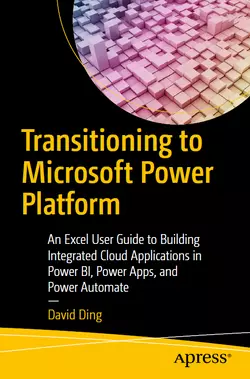Transitioning to Microsoft Power Platform

eBook Details:
- Paperback: 516 pages
- Publisher: WOW! eBook (May 3, 2023)
- Language: English
- ISBN-10: 1484292383
- ISBN-13: 978-1484292389
eBook Description:
Transitioning to Microsoft Power Platform: An Excel User Guide to Building Integrated Cloud Applications in Power BI, Power Apps, and Power Automate
Welcome to this step-by-step guide for Excel users, data analysts, and finance specialists. It is designed to take you through practical report and development scenarios, including both the approach and the technical challenges. This book will equip you with an understanding of the overall Power Platform use case for addressing common business challenges.
While Power BI continues to be an excellent tool of choice in the BI space, Power Platform is the real game changer. Using an integrated architecture, a small team of citizen developers can build solutions for all kinds of business problems. For small businesses, Power Platform can be used to build bespoke CRM, Finance, and Warehouse management tools. For large businesses, it can be used to build an integration point for existing systems to simplify reporting, operation, and approval processes.
The author has drawn on his 15 years of hands-on analytics experience to help you pivot from the traditional Excel-based reporting environment. By using different business scenarios, this book provides you with clear reasons why a skill is important before you start to dive into the scenarios. You will use a fast prototyping approach to continue to build exciting reporting, automation, and application solutions and improve them while you acquire new skill sets. The book helps you get started quickly with Power BI. It covers data visualization, collaboration, and governance practices. You will learn about the most practical SQL challenges. And you will learn how to build applications in PowerApps and Power Automate.
- Develop reporting solutions and business applications
- Understand the Power Platform licensing and development environment
- Apply Data ETL and modeling in Power BI
- Use Data Storytelling and dashboard design to better visualize data
- Carry out data operations with SQL and SharePoint lists
- Develop useful applications using Power Apps
- Develop automated workflows using Power Automate
- Integrate solutions with Power BI, Power Apps, and Power Automate to build enterprise solutions
The Transitioning to Microsoft Power Platform book ends with an integrated solution framework that can be adapted to solve a wide range of complex business problems.
